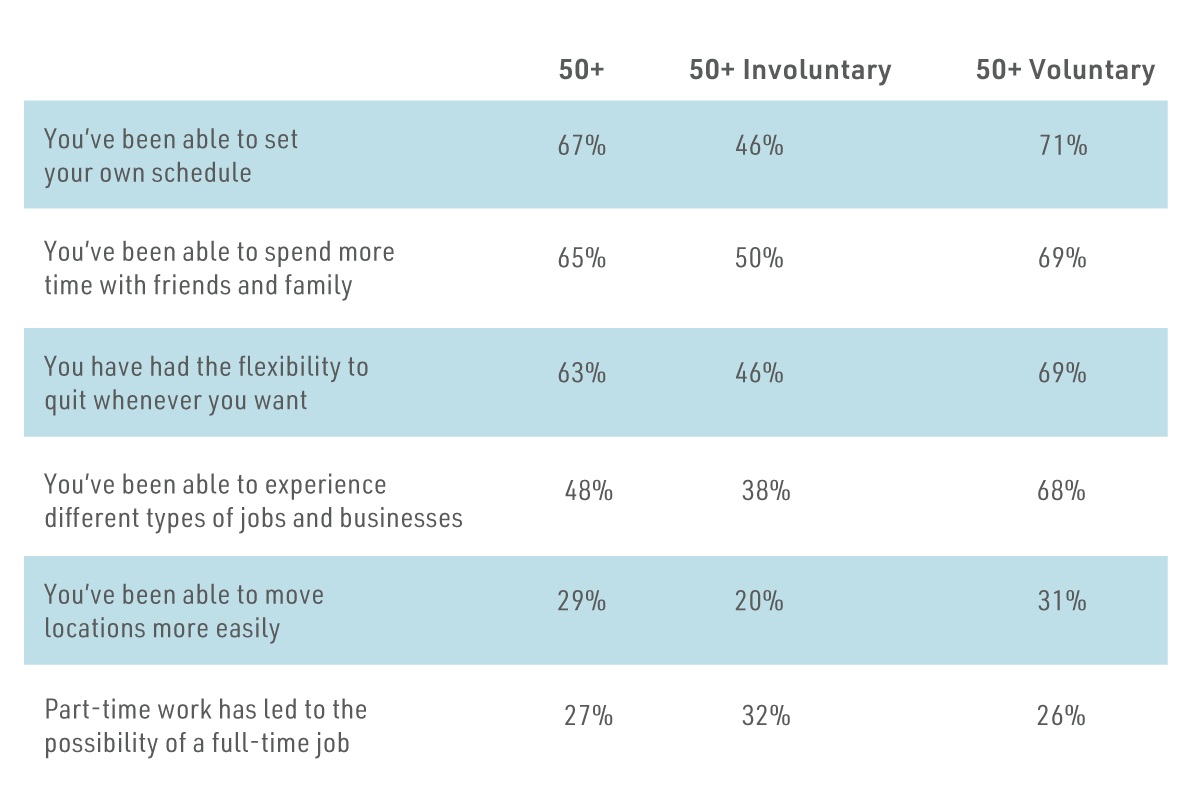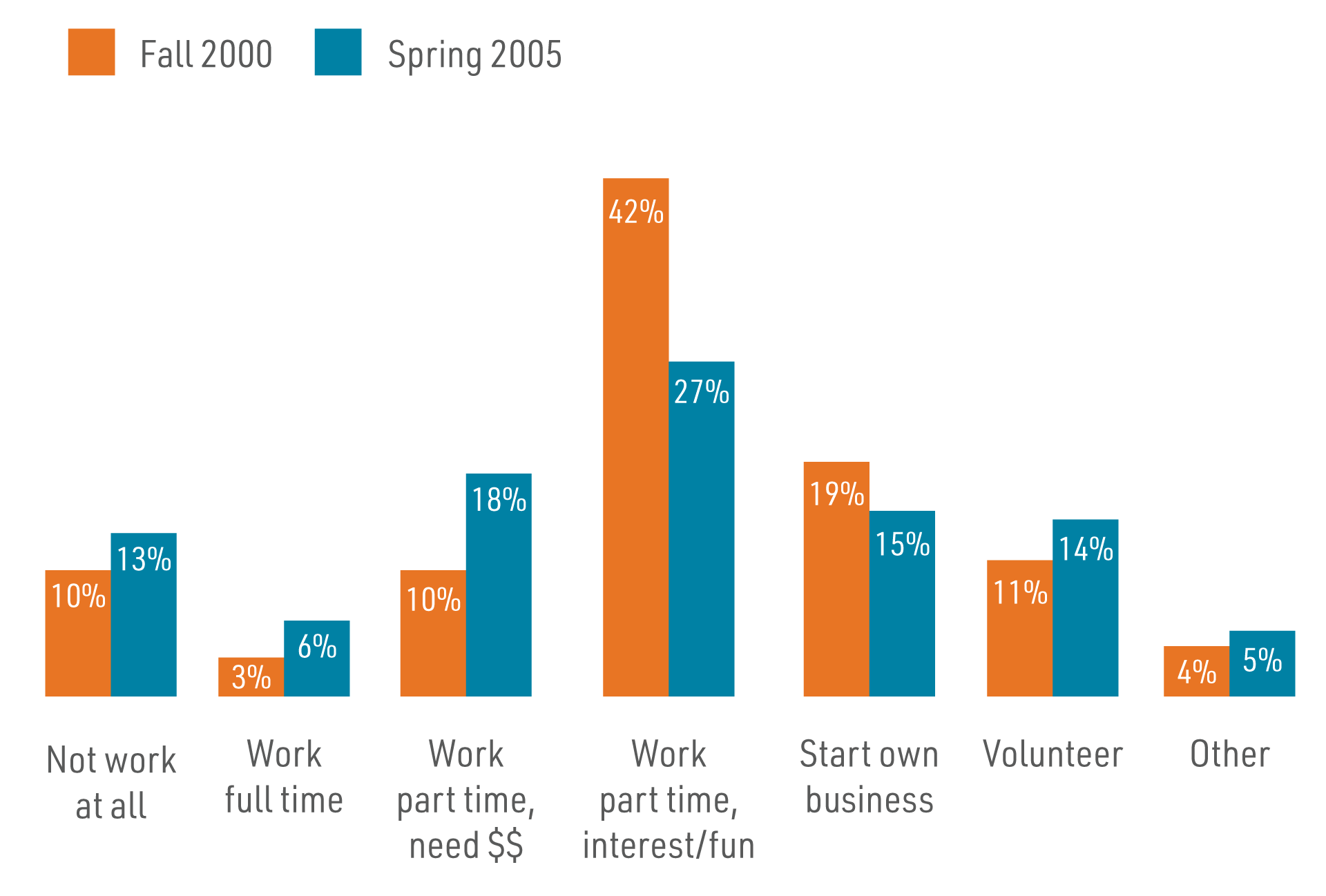Work Trends | Chapter 8
Older Workers, Job Loss, and Retirement
Work Trends surveyed workers about retirement, including the experiences of workers who had retired but remained in the workforce, opinions about being older workers, and perceptions about retirement pensions and plans.
Studies
The Joys and Disappointments of Older Part-time Workers
Fielded online from March 25 to April 6, 2015, with a national probability sample of 944 U.S. residents aged 18 or older who had at least one part-time job, defined as fewer than 35 hours per week This report focused on part-time workers in the United States, aged 50 and older (hereafter 50+), and their experiences in the workplace.
A Work-Filled Retirement: Workers’ Changing Views on Employment and Leisure
This survey was conducted from May 2 to June 12, 2005. The report was based on a total of 800 telephone interviews with adult members of the workforce in the contiguous United States, including 82 people who had retired from their primary jobs but remained in the workforce. American workers described their expectations of retirement and their views of how older workers are treated in the workplace.
Second Wind: Workers, Retirement, and Social Security
The survey was conducted from August 4 to 31, 2000 by the Center for Survey Research and Analysis at the University of Connecticut. This report was based on a total of 1,005 telephone interviews with adult members of the workforce in the contiguous United States. American workers discussed how they viewed retirement in the new economy, what they hoped for, and what they feared.
Key Findings
The 2015 survey analyzed voluntary (individuals who chose part-time work) and involuntary (those who wanted to work full time but couldn’t find a full-time job) part-time workers, asking what was the main reason for their current job situation. Older involuntary workers indicated either their inability to find full-time work (50%) or a weak economy was to blame (42%). Four in 10 (41%) 50+ voluntary part-timers said they preferred the part-time schedule, and more than one quarter (29%) said they retired from full-time work.
While many voluntary part-time workers aged 50 and older said they were rather satisfied with their jobs in 2015, the views of involuntary part-time workers were very different.
- Just one fifth (17%) of 50+ involuntary part-time workers reported the highest level of satisfaction, compared to half (49%) of 50+ voluntary part-time workers. A quarter (27%) of 50+ involuntary part-time workers said they were dissatisfied, compared to fewer than 1 in 10 (9%) 50+ voluntary part-time workers.
- The advantages of working on a part-time schedule were clear — schedule flexibility, time for leisure and family, and opportunities to explore career options.
Compared with the 2000 Work Trends survey Second Wind, workers in 2005 were more likely to believe they would have to work full time or part time to ease money concerns, and less likely to work part time for enjoyment or interest. In the fall 2000 Work Trends, only 13% of American workers reported that they would be working either full time or part time for the needed income following retirement, compared with 24% in spring 2005.
One point of concern related to age and work came from workers’ belief that age plays a role in treatment within the workplace. Older workers were believed to be treated unfairly relative to their younger peers during the hiring process (44% of all workers agreed with this assessment), when salary increases are determined (32%), and when promotions are decided (25%).
By the Numbers
In response to the question asked of workers in 2005, “At what age do you consider a person to be an older worker?,”
%
of workers cited an age younger than 50
When asked the same question about what they believed employers’ cutoff to be…
%


